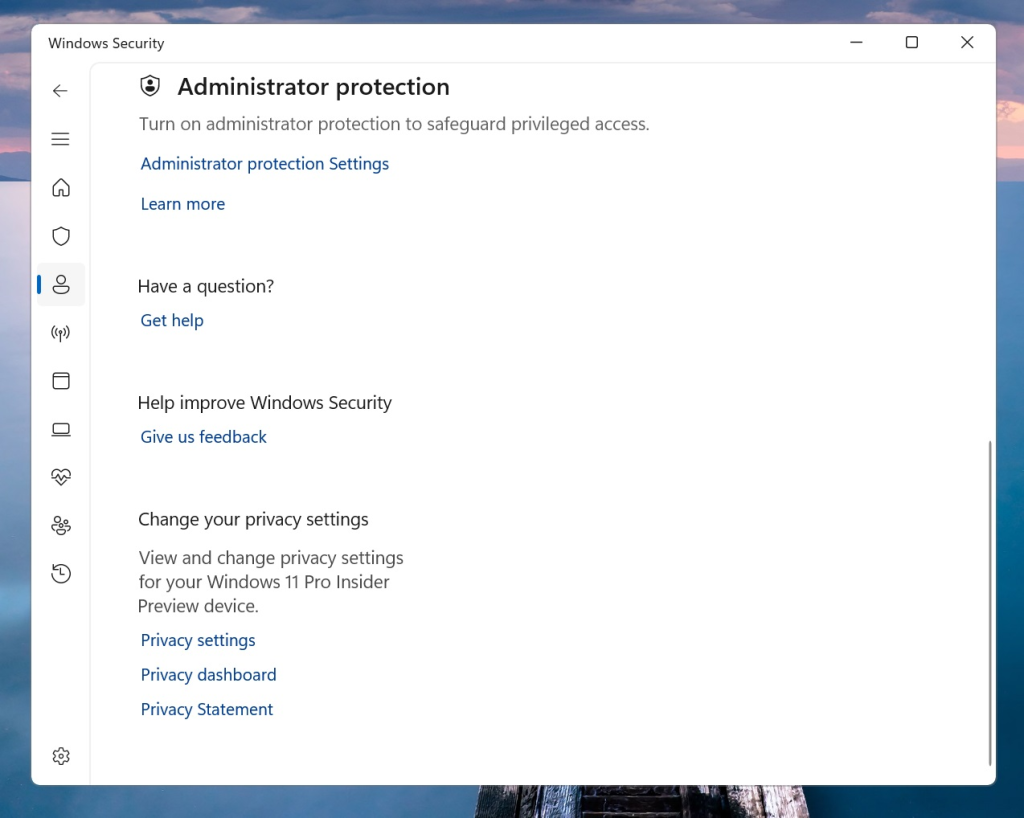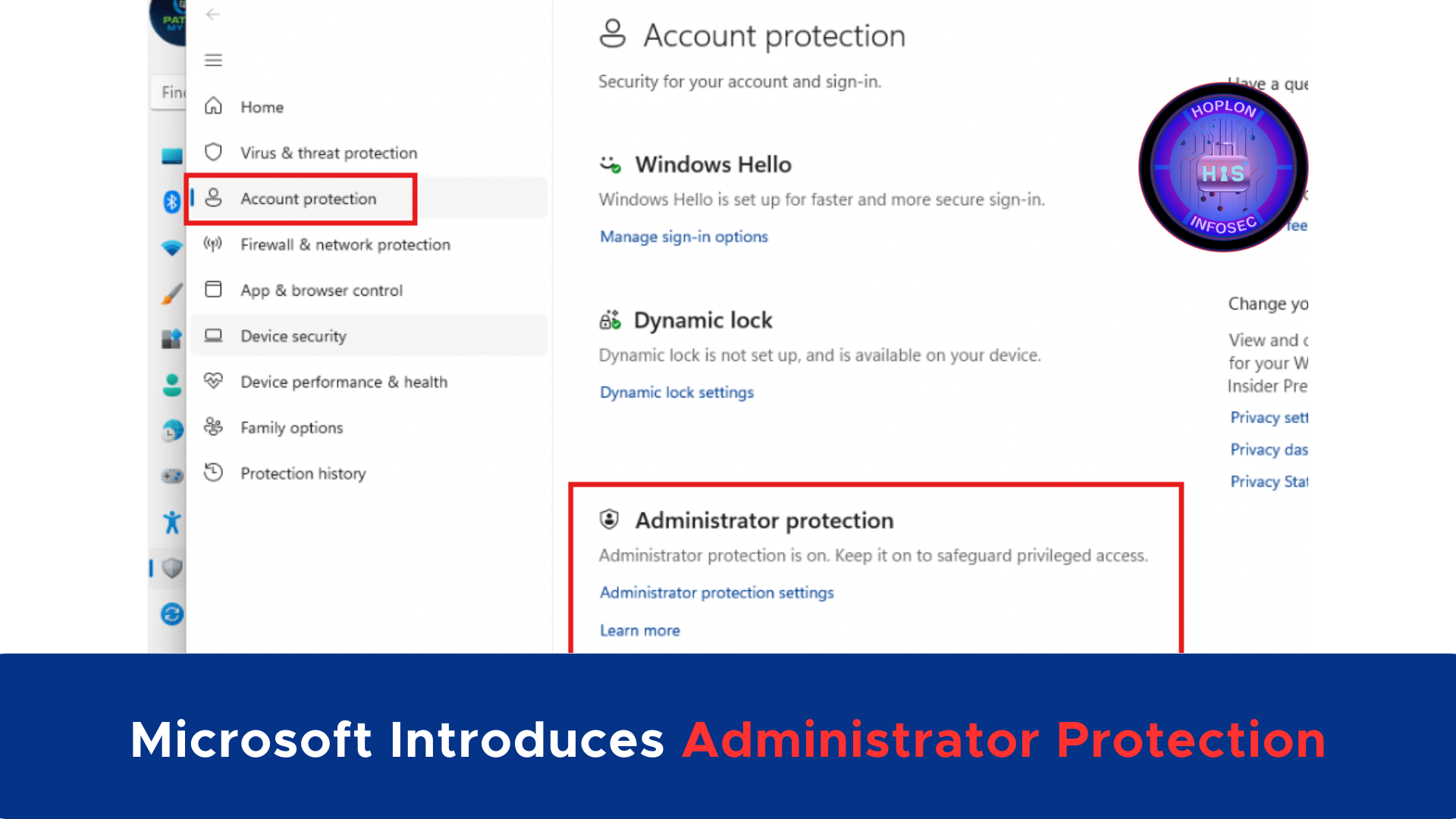Microsoft has taken a significant step in enhancing Windows security by introducing a new Administrator Protection feature. This innovative addition is currently available to Windows Insiders in the Canary Channel as part of the Windows 11 Insider Preview Build 27774. Designed to address longstanding vulnerabilities associated with administrative privileges, Administrator Protection offers a modern approach to managing system security.
In this article, we’ll explore Administrator Protection’s key aspects, features, and potential impact on the Windows ecosystem.
Understanding Administrator Protection

Administrator Protection is a security enhancement that aims to mitigate risks linked to administrative accounts. Traditionally, users logged into an administrator account have had unrestricted access to system resources, making these accounts prime targets for malware and cyberattacks.
The new feature adopts the Principle of Least Privilege (PoLP), ensuring that administrative accounts are standard users by default. Privileges are granted on a just-in-time (JIT) basis, allowing elevated access only when a specific task demands it. This approach significantly reduces the exposure of administrative accounts to potential threats.
Users must authenticate explicitly When they attempt actions requiring administrative rights, such as installing software or modifying critical system settings. This enhanced security layer is achieved through Windows Hello, which supports biometric authentication methods like fingerprint and facial recognition or PIN verification. Additionally, color-coded elevation prompts highlight potentially risky actions, making users more aware of the implications of their decisions.
Key Features of Administrator Protection
Microsoft has packed Administrator Protection with features designed to strengthen system security while maintaining usability. Here’s an in-depth look at its main functionalities:
1. Default Standard Permissions for Administrator Accounts
One of the most notable aspects of Administrator Protection is its default setting, which treats administrator accounts as standard users. While logged in as an administrator, users will no longer have unrestricted access to system resources. This ensures that:
- Administrative tasks require explicit authentication.
- Malicious programs cannot exploit administrative privileges unless explicitly authorized.
This shift in permissions reduces the likelihood of unauthorized changes or installations, bolstering overall system security.
2. Just-in-Time Privileges
With Administrator Protection, elevated permissions are temporarily granted for specific tasks and revoked immediately after the task is completed. This just-in-time privilege management minimizes the time an account operates with elevated rights, thereby reducing the attack surface for malicious actors.
3. Simplified User Activation
Enabling Administrator Protection is designed to be straightforward. Users can activate the feature directly from the Account Protection tab in Windows Security settings without needing assistance from IT administrators. According to Microsoft:
“Administrator protection can now be enabled from Windows Security settings under the Account Protection tab. This allows users to enable this feature without requiring help from IT admins.”
This self-service approach also extends to home users, making the feature accessible to a wide user base. However, activation requires a system reboot to apply changes and ensure proper configuration.
4. Enhanced Elevation Prompts
A standout feature of Administrator Protection is the introduction of color-coded elevation prompts. These prompts provide visual cues to help users distinguish between trusted and untrusted applications. The prompts are further extended over the app description, making them harder to overlook. This proactive design ensures that users are more informed and cautious when performing actions that require elevated privileges.
Benefits of Administrator Protection

Implementing Administrator Protection is expected to benefit both individual users and organizations. Here’s a closer look at some of the advantages:
1. Reduced Risk of Privilege Escalation Attacks
Administrator Protection helps mitigate the risk of privilege escalation attacks by limiting the time and scope of elevated privileges. These attacks often exploit administrative accounts to gain unauthorized access to sensitive system resources.
2. Empowerment of Non-Technical Users
The self-service activation of Administrator Protection allows users, even those without technical expertise, to secure their systems effectively. This democratization of security tools ensures that home users can enjoy the same level of protection as enterprise environments.
3. Enhanced User Awareness
The color-coded prompts and explicit authentication requirements foster greater awareness among users. By distinguishing between trusted and untrusted actions, the feature encourages responsible behavior and reduces the likelihood of unintentional security breaches.
4. Improved Compliance with Security Best Practices
The emphasis on the Principle of Least Privilege aligns with industry best practices for cybersecurity. Organizations that adopt Administrator Protection can improve compliance with regulatory standards and reduce vulnerabilities in their IT environments.
Deployment and Future Plans
Administrator Protection is available exclusively to Windows Insiders running Build 27774 in the Canary Channel. This early-access phase allows Microsoft to gather valuable user feedback and refine the feature before rolling it out to a broader audience.
The company has indicated plans to integrate Administrator Protection into future updates for Windows 11, potentially making it a cornerstone of the operating system’s security framework. As the feature evolves, it will likely incorporate enhancements based on user input and emerging cybersecurity challenges.
Why Administrator Protection Matters
The introduction of Administrator Protection underscores Microsoft’s commitment to addressing critical security challenges. Administrative accounts have long been a weak point in Windows systems, often exploited by malware and attackers to gain control over devices. By fundamentally rethinking how these accounts are managed, Microsoft is proactively safeguarding its users.
The feature offers enterprises a way to strengthen their security posture without imposing significant administrative overhead. Home users, meanwhile, benefit from advanced protections that were once the domain of IT professionals.
How to Enable Administrator Protection
If you are a Windows Insider and wish to explore Administrator Protection, follow these steps:
- Update to Build 27774: Ensure your system runs the Windows 11 Insider Preview Build 27774 in the Canary Channel.
- Access Windows Security: Open the Windows Security app from the Start menu.
- Navigate to Account Protection: Go to the Account Protection tab in the app.
- Enable Administrator Protection: Toggle the feature and restart your system to apply the changes.
By following these steps, you can experience firsthand the benefits of this innovative security feature.
Conclusion
Administrator Protection marks a significant milestone in Microsoft’s efforts to enhance the security of Windows systems. The feature addresses longstanding vulnerabilities associated with administrative accounts by introducing just-in-time privileges, default standard permissions, and enhanced elevation prompts.
As the feature progresses through its development and testing phases, it promises to become a vital tool for securing Windows devices against modern threats. Whether you’re an enterprise user or a home user, Administrator Protection is poised to offer a safer, more secure computing experience.
Stay tuned for future updates as Microsoft refines this groundbreaking feature and prepares it for general availability.
For more:
https://cybersecuritynews.com/new-administrator-protection-feature/




